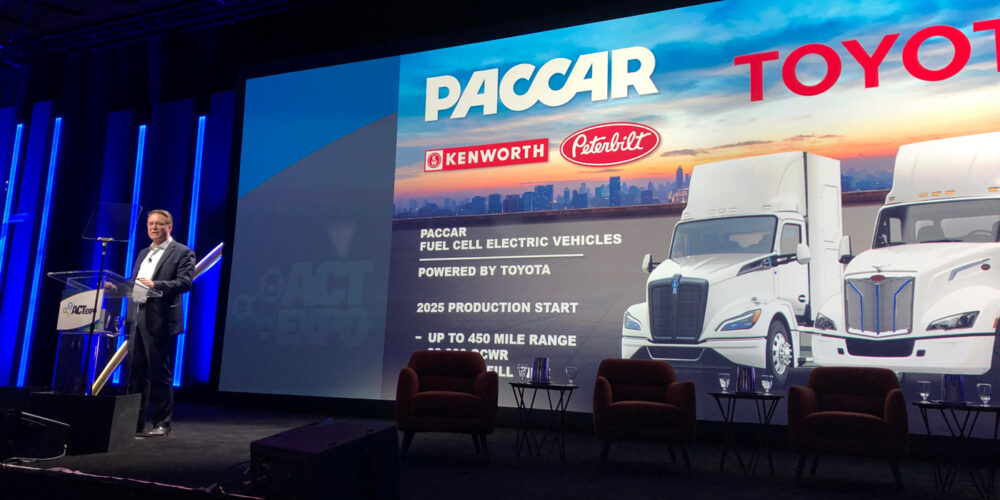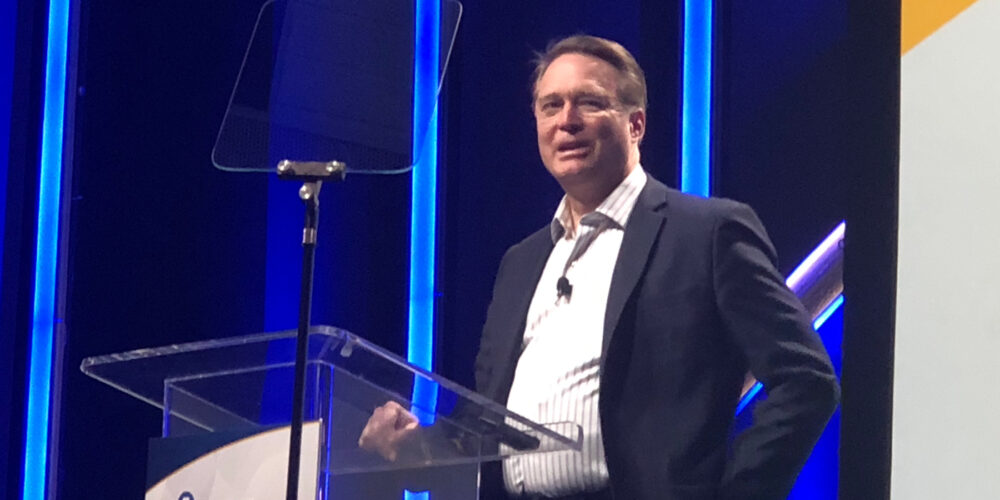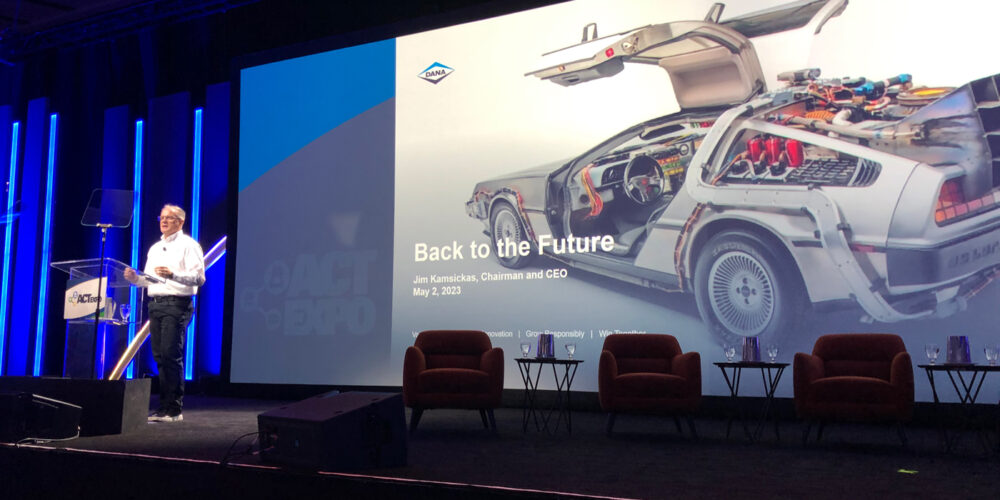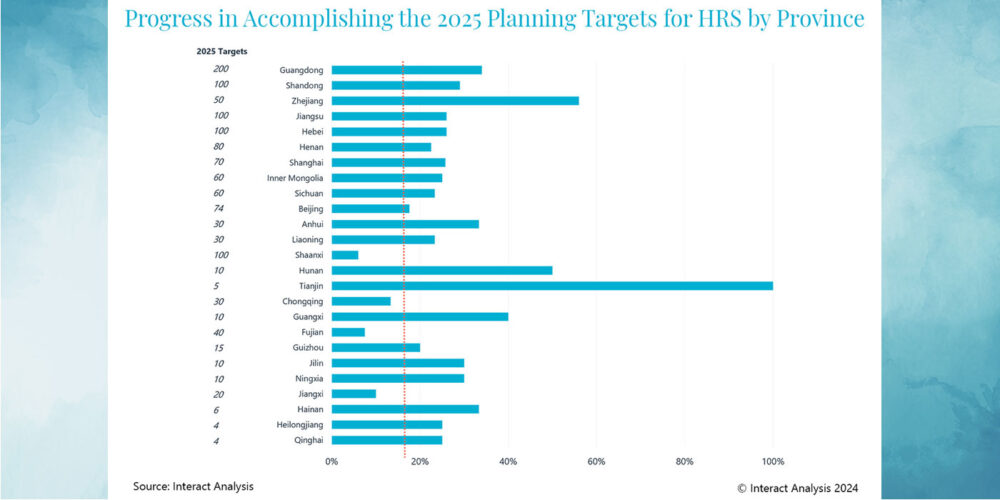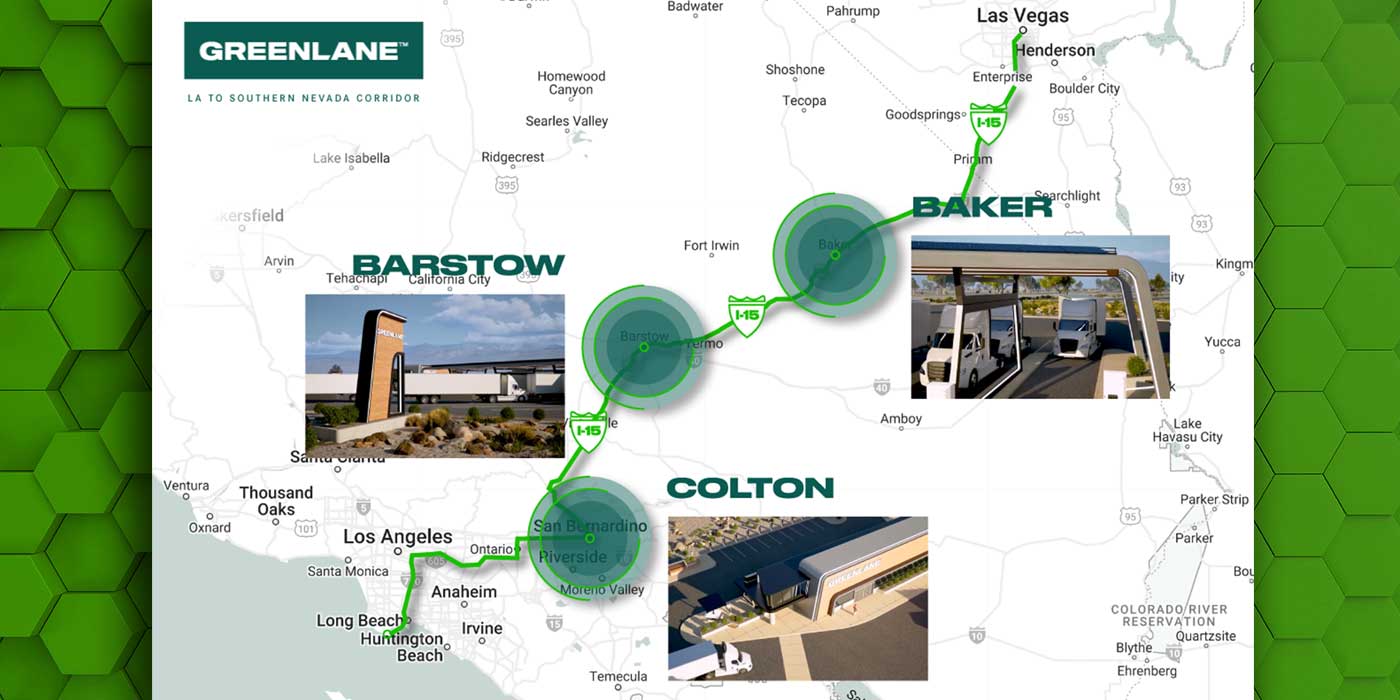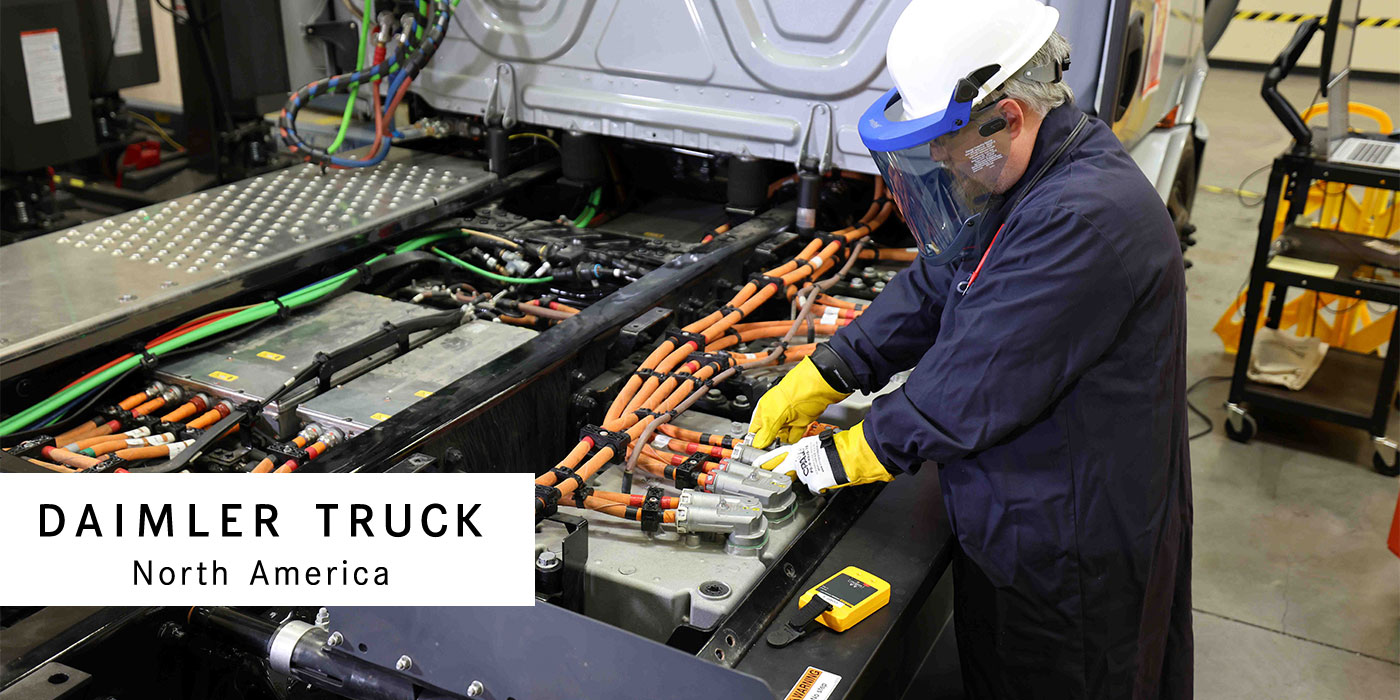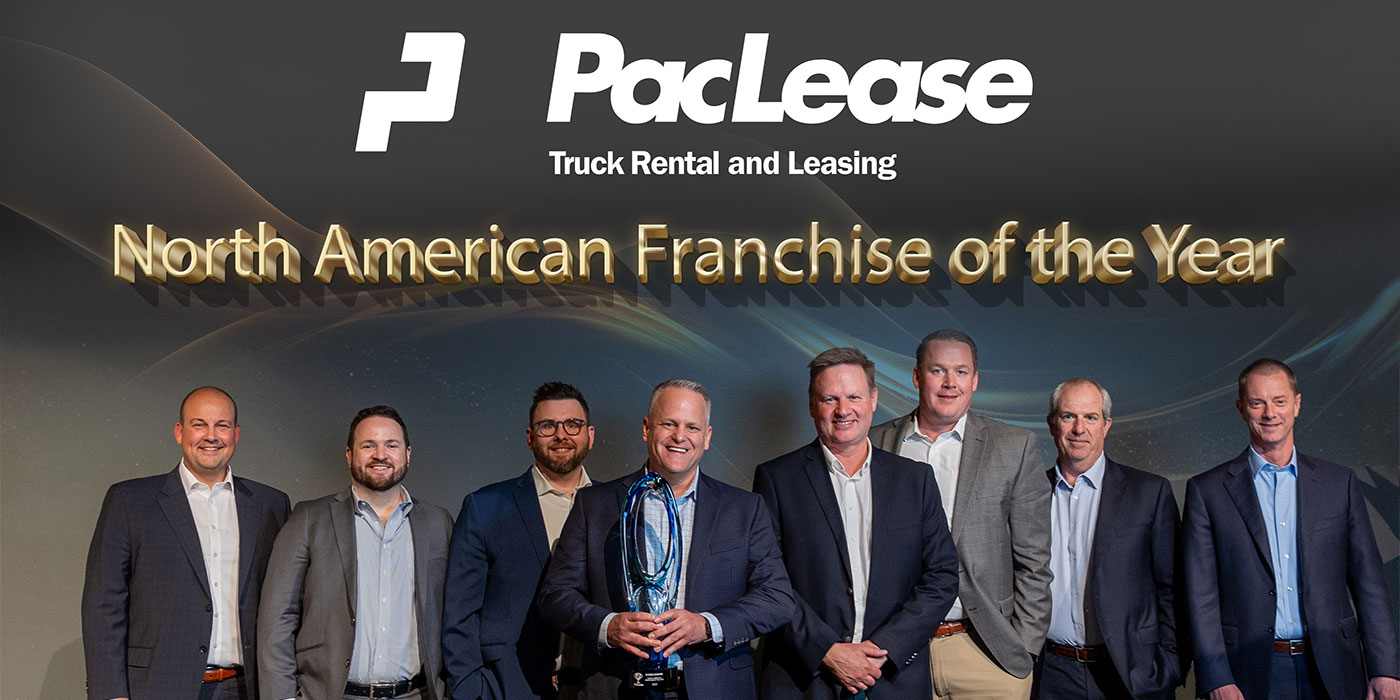Regulations and growing demand for sustainable solutions are aggressively influencing how fleets think about logistics, and suppliers are shifting their strategies to comply. It wasn’t long ago that traditional names in trucking component manufacturing like Dana and PACCAR spent the vast majority of their resources on producing solutions for diesel-powered vehicles, but that reality is starting to change. Read on to hear from industry executives from PACCAR and Dana, who provided updates and their perspectives on the latest trends facing the commercial transportation sector during ACT Expo’s Tuesday morning keynote.
One size does not fit all; PACCAR/Toyota hydrogen fuel cell truck partnership
The needs of every fleet are unique, and whether one needs a fleet of battery-electric trucks or another needs the latest generation of connected or automous technology, suppliers need to be ready to serve whatever is needed, said John Rich, Vice President and Chief Technology Officer, PACCAR Inc. To this end, Rich announced that PACCAR and Toyota are moving forward to build hydrogen fuel cell Class 8 trucks for the American market, with a 2025 production start.
“Just to be very clear, this is not a pilot. It’s not an experiment. It’s not a trial. We’ve done all that,” Rich said. “This is a tool that is ready to go to work, purchased, deployed, and supported with all the durability on uptime and expectations of the diesel engine.”
Here are the notable quoteables from his speech:
- “Hydrogen presents the best zero-emission technology solution for long-distance Class 8 trucks on range, weight capacity and refueling downtime.”
- “Trucks provide almost a quarter of emissions in transportation.”
- “We’re facing a convergence of technology, regulation and climate change.”
- “A lot of people want to compare the transition to zero emissions to consumer vehicles, but commercial vehicles are going to be much more complicated. Trucks are not vanity purchases, they are tools. For now making progress with air quality and CO2 is expensive. Hitting California’s objectives without disrupting fleet business will be incredibly difficult.”
- “We’ve learned a lot as an industry, and the subsequent choices are starting to be made with what to build, what to buy and how to partner effectively. Whether we’re talking about the battery-electric vehicle you can order today or the hydrogen vehicle of tomorrow, we must have the flexibility to support the specific needs of the customer.”
- “PACCAR enjoys its position as the most popular automous truck partner in the industry. Each element is extremely specialized and requires deep partnership across the value chain. in the coming year I think we’ll see the real winners in this space emerge.”
ZEV regulations? You ain’t seen nothin’ yet
A more sustainable future for commercial transportation begins with manufacturer partnerships, said Jim Kamsickas, chairman and chief executive officer, Dana. Government regulations in the U.S. are ramping up and aren’t slowing down anytime soon. The only way to keep up with the latest rules and fleet demand, he says, is “true partnerships across the commercial vehicle ecosystem.” Here are the notable quoteables from his speech:
- “By some estimates, the EPA and CARB will soon adopt more environmental regulations within a 10-year window than they have in the previous three years.”
- “States are setting goals for 100% of all new medium- and heavy-duty vehicles to be emissions-free by 2050. These jurisdictions represent 43% of the population, nearly half of the economy and 36% of the nation’s medium- and heavy-duty vehicles, and these are now expanding beyond the federal and state levels to include cities like New York, and Minneapolis, and Boulder, and many others.”
- “Cities cover 3% of the Earth, yet they’re responsible for 70% of all carbon emissions. This signifies even more ambitious planning at the city level specifically for those that are more industry rich.”
- “We [Dana] are accelerating our commitment to reduce our annual Scope One and Scope Two emissions by at least 75% by 2030. We also announced we will reach our goal of being net-zero GHG emissions by 2040.”
- “Some good news to further help fleets is that through policy set forth by the Inflation Reduction Act incentive funding is expected to average $32 billion annually for potentially the next four-to-five years. By many accounts, this is considered the largest United States government investment in climate action.”
- “We are no longer able to operate in a transactional environment. Partnership is the new leadership.”

